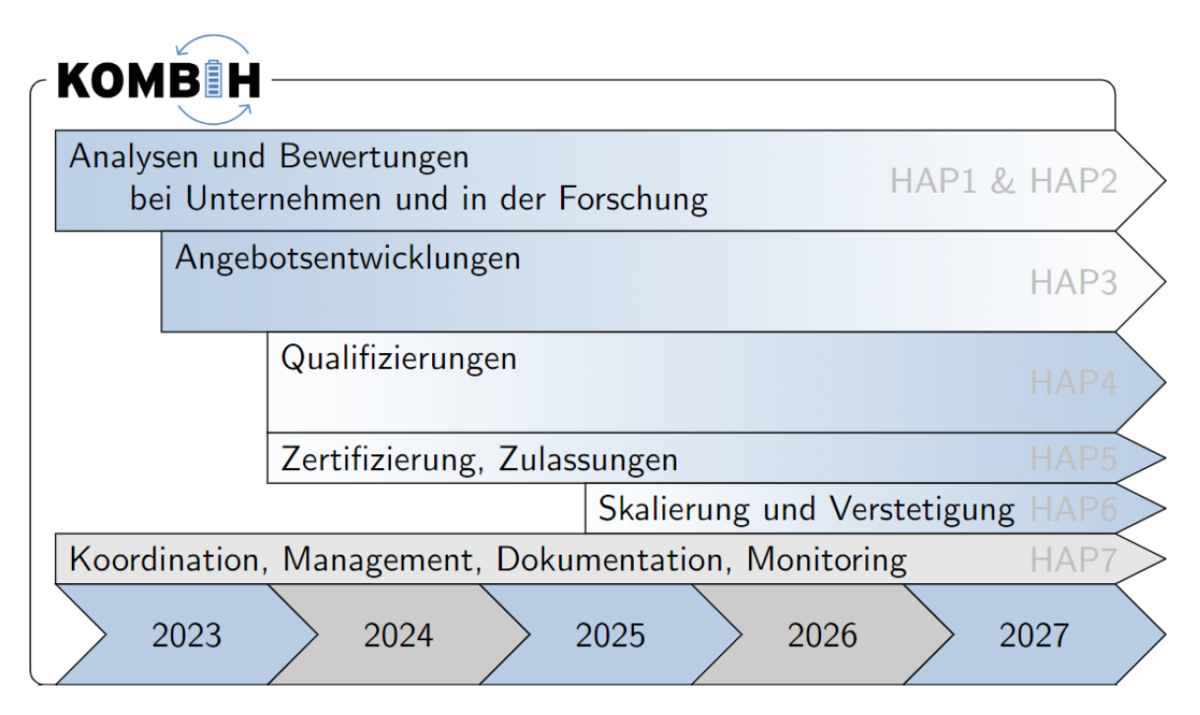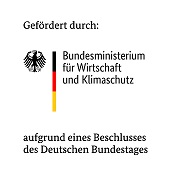
KOMBiH Competence for battery cell production in the capital region
Project description
The BTU is part of this network and represented with two subprojects:
KOMBiH-Campus deals with the qualification measures on the basis of individual module components in the sense of the modular principle and KOMBiH-Laboratory with the determination of the scientific basis for teaching content, thus the chemical-technical processes.

In the KOMBiH project, company requirements in terms of competencies for value-added processes in battery cell production and the associated training requirements of employees are identified, relevant qualification offers are developed, implemented and scaled in the capital region by 2027. In light of current development dynamics, professional development courses are being designed for complete value-added cycles. [IBBF, 2022]
- Project duration: 01/2023 - 12/2027
- Project funding: 1.1 million euros
- Funding: German Federal Ministry of Economics and Climate Protection.
Work packages
WP1.a Analysis of existing education/training offers
WP1.b Mapping of regional automotive, energy sector innovations (incl. upstream/downstream processes)
WP1.c Empirical analyses of current and future demand for skilled workers and safeguarding measures
WP1.d Expert workshops with cluster stakeholders for presentation, discussion and dissemination of analysis results
WP1.e Conclusions for the development of qualification offers and skilled worker requirements
WP2.a Prepare battery cell R&D for qualification in WP.1, update for WP 2+3.
WP2.b Record, prepare and update R&D content for 2nd life/recycling.
WP2.c R&D status Circulare Economy, incl. value creation capture and prepare
This work package will be handled by our colleagues from the KOMBiH lab at the FG Physical Chemistry.
AP3.a Develop offer module structure as a matrix for main target groups.
AP3.b Comparison of existing offers for qualifications level 5, 6 (7) with needs
AP3.c Comparison of existing offers with needs, trades and professions.
AP3.d Adaptation of existing, development of new offers for main/target groups industry
AP3.e Adaptation of existing, development of new offers for main/target groups, skilled trades
AP3.f Adaptation of existing and development of new offers for secondary target groups
AP5.a Certification under special legislation
AP5.b Accreditation and admission for employment promotion - AZAV
AP5.c Certification in transition management between vocational and higher education
AP5.d Other certifications Admissions
AP4.a Qualifications in the industry
AP4.a.1 Further training of executives
AP4.a.2 Continuing education for company training personnel
AP4.a.3 Continuing education for skilled workers
AP4.a.4 Further training for career changers
AP4.b Qualification of skilled trades
AP4.b.1 Executives: implement, evaluate, further develop trainings
AP4.b.2 Training personnel: implement, evaluate, further develop trainings
AP4.b.3 Skilled electricians/, SHK, career changers: implement, evaluate, further develop training courses
AP4.b.4 Skilled workers automotive, metal, lateral entrants: implement, evaluate, further develop trainings
AP4.c Learning company: Implementation of in-company / inter-company learning - Lead BTU/ZWW
AP4.c.1 Development of inter-company, informal, cooperative formats, implementation of organizational learning
AP4.c.2 Training for skilled workers with foreign qualifications for the German labor market
AP4.c.3 Addressing, process support, evaluation
HP6.a Scaling, transfer, and perpetuation in the companies of the cluster via communication channels of the cluster management.
HP6.b Cross-cluster future dialogs with other clusters and sub-projects of the joint innovation strategy/ Berlin-Brandenburg.
HP6.c Scaling through transfer/ and perpetuation in supraregional networks Projects

